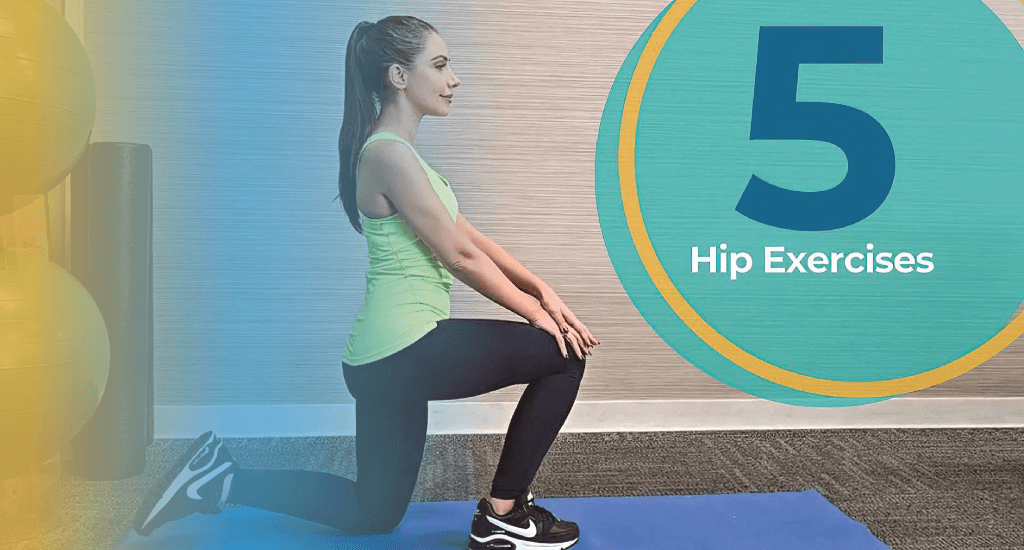5 Hip Exercises for People Who Sit All Day
September 19, 2024
Whether it’s in your truck, at your desk, or at your workbench, some of us have jobs that make sitting all day a requirement (we have yet to hear of an air traffic controller or bus driver working from a standing desk.)
But as anyone who sits for long periods will tell you, all those hours spent holding your body in the same position can become very uncomfortable – not just while you’re sitting, but also as you go about the rest of your day.
An Inside Look: What Happens to Your Body When You Sit
If you’re like many of the patients we see each day, most days you’re so busy that you don’t even realize you haven’t been active. As you’ve been busy logging miles, knocking out projects or crossing things off your To Do list, your body has been held in the same position – sometimes for hours without a break.
When we sit, the muscles that move and stabilize our hips can become tight (or, more technically, short). Specifically, your hip flexors — the large muscle group which originates in your low back and crosses over your hips. The hip flexors primary responsibility is to hip flexion (or knee-to-chest movement.) When you hold them in that flexed position during prolonged sitting without stretching or moving or giving them a chance to move and build strength, they can tighten and constrict, making them stiff and painful, and potentially resulting in back pain or knee pain as well (because as we know, it’s all connected.)
The Hip Bone’s Connected to…Well, Everything.
When the hips become tight and weakened, you are not only at risk for hip pain – it can also cause low back pain. The hips are responsible for supporting most of your bodyweight and are crucial to most of the ways you move every day. allowing for movement. Poor hip mobility can restrict movement and cause other areas of your body to overcompensate – including your low back.
That’s not all. Tight hips can lead to an anterior pelvic tilt – when the pelvis rotates forward, causing the lower back to arch excessively. This can put added stress on the lower back muscles and ligaments – as we know, added stress is never a good thing.
Last but certainly not least, tight hip muscles can compress the sciatic nerve, which runs from your lower back down through your hips and legs. As anyone who has had the unpleasant experience of dealing with sciatica knows, it can be debilitating, with symptoms ranging from shooting pain to numbness and tingling throughout your lower.
Over time, tight hips can affect the way you move and even impair the function of your hip joint, which can lead to osteoarthritis. The good news? Good hip mobility and proper alignment of your spine and joints can help to head that off at the pass.
How to Know If You Have Tight Hips
If you’re having pain – when sitting, while trying to sleep – that’s a good indication, of course. But here are a few signs that your hips could use a mobility boost.
- Trouble going from sitting to standing (especially if those first few steps are difficult) Changes in your gait: walking in a slightly bent position
- having trouble going up or down stairs
- Problems with balance
- Feeling sore in the front of your hip or low back
- Some people also experience knee pain as a result of muscle weakness and changes in the way they move.
5 Moves to Improve Your Hip Mobility
Improving your hip mobility is probably easier than you think. While some stretches or mobility exercises may seem challenging at first, you may be surprised at how quickly your body responds.
Here are some of our favorite hip mobility moves, specially selected for people who sit all day – oh, and 1 tip. Take breaks! Standing or moving every hour is ideal but do what you can. You deserve those breaks and so do your hips.
Hip Axial Rotations
Seated Figure 4 Stretch
Hip Flexor Hurdles
Lunging Hip Flexor Stretch
Kneeling Hip Rotation
Lift and rotate your right knee out to the right side of your body until you feel a gentle stretch in the front of your hip. Hold for 1 count. Return to center. Repeat on the other side.
Improving your mobility can improve the way you feel and move. It can even help you sleep better. Good mobility is the key to aging well, so it’s important to protect yours.
Need a little boost? Improved mobility is one of the first benefits Chiro One patients notice after beginning care. Find out how chiropractic care can help you improve your mobility. Find a clinic near you or schedule an appointment today.

